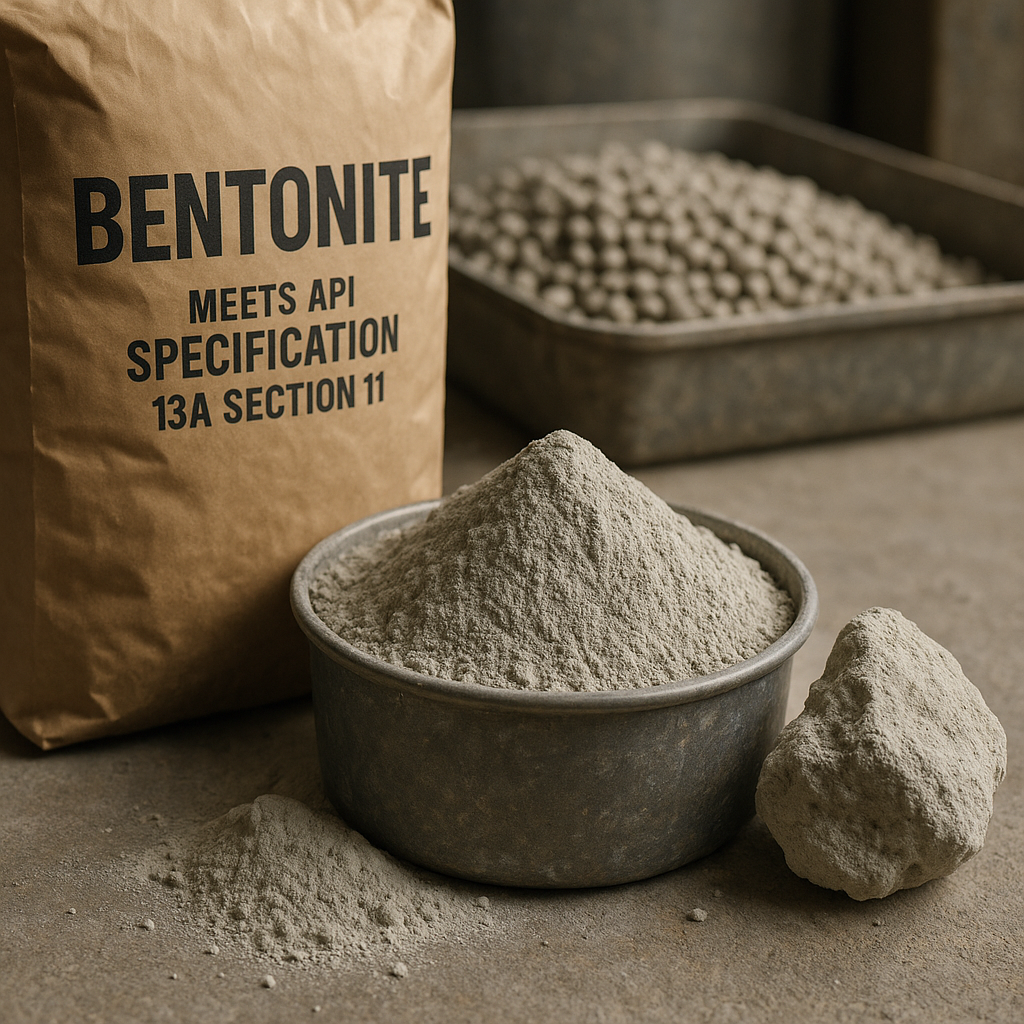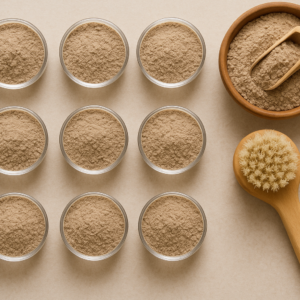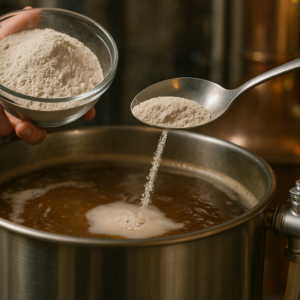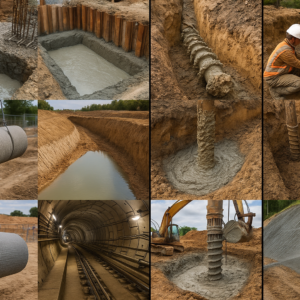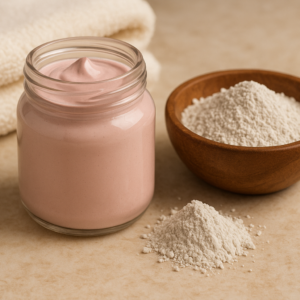Ever wondered why some drilling operations run smoothly while others face constant mud-related problems?
The answer often lies in the quality of bentonite being used. API 13A Section 11 bentonite is a finely ground, premium quality grade that meets the American Petroleum Institute (API) Specification 13A Section 11 (OCMA) requirement. If you’re involved in drilling operations, construction, or industrial applications, understanding this specification can save you time, money, and countless headaches.
In this guide, I’ll walk you through everything you need to know about API 13A Section 11 bentonite, its applications, and why it matters for your projects.
Understanding API 13A Section 11 Bentonite
Let me start with the basics. API Spec 13A covers physical properties and test procedures for materials manufactured for use in oil- and gas-well drilling fluids, including bentonite.
What makes API 13A Section 11 special?
This specification sets stringent standards for drilling-grade bentonite clay. It ensures the material meets specific performance criteria essential for drilling operations.
Key characteristics include:
- Viscometer dial reading at 600 rpm: Minimum 30
- Yield point to plastic viscosity ratio: Carefully controlled
- Fluid loss properties: Optimised for borehole stability
- pH levels: Maintained within specified ranges
Think of it as a quality certificate that guarantees your bentonite will perform when it matters most.
The OCMA Connection: Why It Matters
You might have heard the term “OCMA bentonite” used interchangeably with API 13A Section 11.
Here’s the story behind it.
OCMA stood for “Oil Company Materials Association,” an organization that set standards based primarily on what oil companies operating in the Middle East wanted in mud materials.
The evolution:
- OCMA originally developed these specifications
- OCMA’s specifications for bentonite clay were modified and taken over by API/ISO
- Today, API 13A Section 11 incorporates these proven standards
This means when you buy OCMA bentonite today, you’re getting material that meets the current API 13A Section 11 specifications. It’s like getting a proven recipe that’s been refined over decades of real-world use.
Primary Applications of API 13A Section 11 Bentonite
1. Oil and Gas Well Drilling
This is where API 13A Section 11 bentonite truly shines.
Core functions in drilling mud:
- Borehole wall sealing: Its role is mainly to seal the borehole walls
- Cutting removal: To remove drill cuttings
- Lubrication: To lubricate the cutting head
- Cooling: Bentonite served to cool and lubricate the drill bit
Real-world impact:
Imagine drilling through unstable formations without proper mud. The borehole walls could collapse, drill bits could overheat, and cutting removal would become a nightmare. API 13A Section 11 bentonite prevents these issues by creating a protective mud cake on borehole walls.
2. Water Well Drilling
It is non-toxic in nature, and suitable for a variety of applications, including water well drilling.
Why it’s preferred:
- Safe for potable water applications
- Excellent filtration control
- Shear thinning nature of the clay helps to remove cuttings from well
3. Geotechnical and Environmental Applications
OCMA bentonite is widely used in geotechnical and environmental research boreholes and drilling mud because of its excellent colloidal characteristics.
Applications include:
- Environmental monitoring wells
- Soil investigation boreholes
- Remediation projects
- Foundation drilling
4. Construction and Civil Engineering
Key uses:
- Slurry walls for excavation support
- Tunnel boring operations
- Foundation stabilisation
- Waterproofing applications
Sodium bentonite, or its OCMA grade, is also beneficial in sealing due to its tendency to swell, making it perfect for creating impermeable barriers.
Technical Specifications and Performance Standards
Let me break down what makes API 13A Section 11 bentonite meet industry standards.
Physical Properties
Viscosity characteristics:
- Minimum viscometer reading: 30 at 600 rpm
- Controlled plastic viscosity
- Optimised yield point ratios
Fluid loss control:
- Improved Filtrate Loss helps to Seal permeable formations
- Optimum Filtrate Loss helps to maintain well-bore stability
Chemical Composition
Essential elements:
- High montmorillonite content
- Controlled sodium content for swelling properties
- Low grit content for smooth operations
- Balanced pH levels
Quality Assurance
Testing parameters:
- Particle size distribution
- Moisture content
- Swelling capacity
- Filtration loss rates
These specifications ensure consistent performance across different drilling conditions.
Benefits of Using API 13A Section 11 Bentonite
1. Operational Efficiency
Higher mud yield: The special higher mud yield results in using less quantity of Bentonite for the same standard mud.
This means you need less material to achieve the same performance, reducing costs and logistics.
2. Enhanced Safety
Key safety benefits:
- Improved borehole stability
- Reduced risk of well collapse
- Better cutting removal reduces equipment wear
- Non-toxic in nature for safer handling
3. Cost-Effectiveness
Financial advantages:
- Reduced material consumption
- Lower operational downtime
- Extended equipment life
- Fewer drilling complications
4. Environmental Compliance
Eco-friendly aspects:
- Natural clay material
- Biodegradable components
- Safe disposal options
- Minimal environmental impact
How CMS Industries Ensures Quality
At CMS Industries, we understand that quality isn’t just about meeting specifications it’s about exceeding expectations.
Our quality commitment:
- ISO 9001:2015 certified manufacturing processes
- Strategic location near world-class ports for global supply
- Monthly production capacity exceeding 9000 metric tons
- Comprehensive quality testing at every stage
What sets us apart:
We don’t just manufacture bentonite; we engineer solutions. Our prime mining locations in the Kachchh region provide access to high-quality montmorillonite deposits. This natural advantage, combined with modern processing techniques, ensures our API 13A Section 11 bentonite consistently meets international standards.
Our mission: To maximise the profitability of all our customers in their processes. This isn’t just a statement, it’s how we approach every batch we produce.
Selection Criteria for API 13A Section 11 Bentonite
1. Application-Specific Requirements
Consider these factors:
- Drilling depth and conditions
- Formation characteristics
- Environmental regulations
- Performance expectations
2. Supplier Evaluation
Key questions to ask:
- Is the supplier API certified?
- What’s their quality control process?
- Do they provide technical support?
- What’s their supply chain reliability?
3. Technical Support
Look for suppliers who offer:
- Application guidance
- Technical troubleshooting
- Custom formulations
- Performance optimisation
Common Challenges and Solutions
Challenge 1: Inconsistent Viscosity
Problem: Mud properties vary between batches
Solution: Choose suppliers with rigorous quality control and consistent raw material sources
Challenge 2: High Fluid Loss
Problem: Excessive filtration leads to formation damage
Solution: Use properly graded API 13A Section 11 bentonite with verified fluid loss properties
Challenge 3: Poor Cutting Removal
Problem: Drill cuttings accumulate in the borehole
Solution: Ensure proper yield point to plastic viscosity ratios in your mud formulation
Future Trends in Bentonite Applications
The drilling industry is evolving, and so are bentonite applications.
Emerging trends:
- Enhanced environmental formulations
- Nano-enhanced bentonite products
- Smart drilling fluid systems
- Automation-compatible materials
What this means for you: Staying updated with API specifications and working with forward-thinking suppliers ensures you’re ready for industry changes.
Conclusion
API 13A Section 11 bentonite isn’t just another drilling material it’s the foundation of successful drilling operations. Whether you’re drilling oil wells, water wells, or conducting geotechnical investigations, the right bentonite makes all the difference.
Key takeaways:
- API 13A Section 11 sets the gold standard for drilling-grade bentonite
- OCMA specifications have been integrated into current API standards
- Quality suppliers provide consistent performance and technical support
- Proper selection saves money and prevents operational headaches
Ready to experience the difference that quality API 13A Section 11 bentonite can make in your operations? At CMS Industries, we’re committed to providing premium-grade bentonite that meets international standards while supporting your project success.
Contact us today to discuss your specific requirements and discover how our expertise in API 13A Section 11 bentonite can optimize your drilling operations.
Frequently Asked Questions
Q:1 What’s the difference between API 13A Section 11 and regular bentonite?
API 13A Section 11 bentonite meets strict drilling industry standards for viscosity, fluid loss, and performance characteristics, while regular bentonite may not have these specifications.
Q:2 Can OCMA bentonite be used interchangeably with API 13A Section 11?
Yes, modern OCMA bentonite typically meets API 13A Section 11 specifications, as the standards have been harmonised over time.
Q:3 How much API 13A Section 11 bentonite do I need for drilling mud?
Typical concentrations range from 5-40 lb/bbl (14-115 kg/m³), depending on formation conditions and drilling requirements.
Q:4 Is API 13A Section 11 bentonite safe for water well drilling?
Yes, it’s non-toxic and specifically approved for potable water applications, making it ideal for water well drilling operations.
Q:5 How should API 13A Section 11 bentonite be stored?
Store in dry conditions, away from moisture and contamination. Proper packaging in lined bags helps maintain quality during storage and transport.



